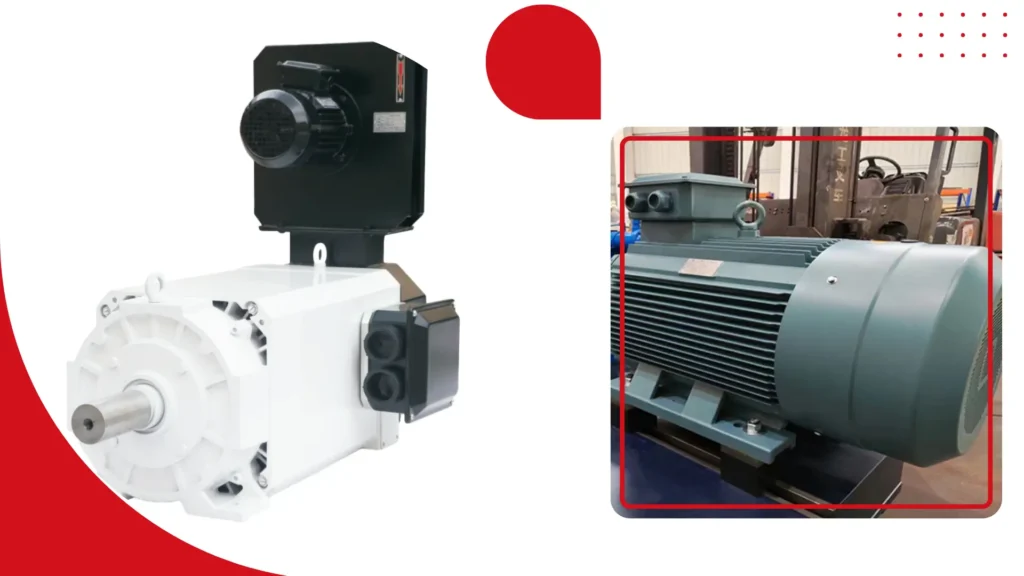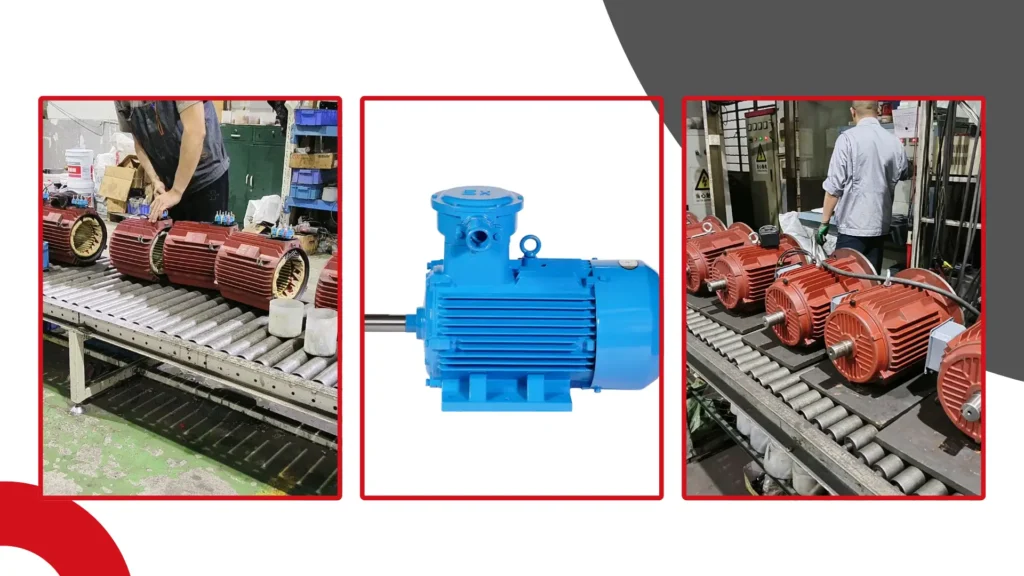The mining industry has always been at the forefront of adopting innovative technologies to enhance efficiency and productivity.
Recently, there has been a significant shift towards rare earth-powered drills among South African mining giants.
This movement is driven by the desire for sustainability, cost-effectiveness, and improved performance.
This article will explore the key aspects of this transition and why it is becoming a priority in the mining sector.
What Are Rare Earth Elements and Why Are They Important?
Understanding Rare Earth Elements
Rare earth elements (REEs) comprise a group of 17 chemical elements situated in the periodic table, which are essential for a wide range of modern technological applications.
These elements include lanthanum, cerium, neodymium, and others, which are integral to the production of high-performance magnets, batteries, catalysts, and various electronic devices.
Their unique chemical and physical properties enable advancements in fields like electronics, renewable energy, and telecommunications, underscoring their significance in driving innovation and economic growth.

The Role of REEs in Drilling Technology
In drilling technology, rare earth elements serve critical functions that enhance the overall efficiency and effectiveness of drilling operations.
Their applications include improving the capabilities of electric motors, providing better magnetic properties, and enhancing the longevity of drill components.
As a result, drills utilizing REEs demonstrate superior performance, including quicker drilling speeds and reduced incidences of mechanical failures, which ultimately boosts productivity in mining operations.
The Importance of Sustainability
The increasing global emphasis on environmental responsibility makes the integration of rare earth elements in mining equipment particularly relevant for sustainability initiatives.
As industries transition towards greener technologies, REEs enable the production of equipment that is not only efficient but also less harmful to the environment.
By incorporating rare earth elements, mining companies can significantly reduce their carbon footprints and contribute to a more sustainable future, aligning with global climate commitments and societal expectations for environmental stewardship.
Also Read:
- Revolutionizing Wind Turbines: Rare Earth PMS Motors in Renewable Energy
- How to Evaluate the ROI of Rare Earth PMS Motors in Your Operations
How Do Rare Earth-Powered Drills Improve Efficiency?
Enhanced Performance Metrics
Rare earth-powered drills are designed to deliver superior torque and smoother operation, allowing for enhanced performance compared to traditional drilling technologies.
This leads to faster drilling speeds and the ability to tackle tougher materials, ultimately reducing the time and resources required to complete drilling tasks.
The improved performance metrics translate into higher productivity levels for mining operations, enabling companies to maximize their output and efficiency.
Energy Efficiency Benefits
One of the standout features of rare earth-powered drills is their energy efficiency, which significantly lowers operational costs in the long run.
These drills are engineered to consume less energy while delivering optimal performance, which not only reduces energy bills but also lessens the environmental impact of mining activities.
By adopting this technology, companies can contribute to sustainability goals and reduce reliance on non-renewable energy sources.

Longevity and Durability
The incorporation of rare earth elements into drill components enhances their durability and longevity, making them a cost-effective choice for mining companies.
With stronger and more resilient materials, rare earth-powered drills require fewer replacements and maintenance interventions, leading to significant savings over time.
This durability not only minimizes downtime associated with repairs but also allows companies to allocate resources more efficiently, focusing on increasing production rather than managing equipment failures.
Are Rare Earth-Powered Drills Cost-Effective?
Initial Investment vs. Long-Term Savings
While the initial investment in rare earth-powered drills may be higher compared to traditional drilling technology, the long-term savings can be substantial.
Energy costs significantly decrease due to increased efficiency, allowing companies to allocate resources elsewhere.
Moreover, the reduced need for maintenance and repairs over the lifespan of these drills ensures that overall operational expenses are minimized, making them a financially sound choice in the long run.
Reducing Overall Operational Costs
By increasing the efficiency of drilling operations, rare earth-powered drills directly contribute to lower overall operational costs for mining companies.
These drills are designed to perform at a higher level, which diminishes the frequency and severity of repairs that can drain resources.
As a result, companies can enjoy greater profitability and improved resource allocation, paving the way for further investment in innovative technologies.
The Value Proposition for Mining Companies
Investing in rare earth-powered drills presents a compelling value proposition for mining companies looking to future-proof their operations.
Not only do these drills address immediate drilling needs with enhanced performance, but they also position companies favorably in the context of increasing regulatory pressures around sustainability.
Ultimately, this investment not only enhances operational effectiveness but also aligns with the growing consumer and investor demand for environmentally responsible practices, offering long-lasting benefits to the business.

What Are the Environmental Benefits of Using Rare Earth-Powered Drills?
Lower Carbon Emissions
Rare earth-powered drills operate with improved energy efficiency, which translates to lower carbon emissions during their operational use.
This reduction in emissions is crucial for mining companies aiming to meet international sustainability targets and contribute to combating climate change.
By adopting these advanced technologies, mining companies can significantly lessen their environmental footprint, aligning their practices with global efforts to reduce greenhouse gases.
Promoting Sustainable Practices
The adoption of rare earth-powered drills reflects a commitment to sustainability within the mining sector, showcasing a proactive approach to environmental stewardship.
By utilizing technology that promotes efficiency and reduces waste, companies demonstrate their dedication to sustainable resource extraction methods.
This commitment not only enhances their industry reputation but also creates a positive impact on stakeholders and the communities in which they operate.
Impact on Local Ecosystems
Efficient drilling practices enabled by rare earth-powered drills help to mitigate the adverse environmental effects often associated with traditional mining activities.
With reduced energy consumption and lower emissions, these drills contribute to the protection of local ecosystems and wildlife habitats.
As mining operations become less intrusive and more sustainable, they help preserve biodiversity and maintain the ecological balance in the areas surrounding mining sites.
How Are Mining Giants Adapting to This Transition?
Training and Development
Mining companies recognize the importance of investing in their workforce to maximize the benefits of rare earth-powered drilling technology.
By implementing comprehensive training programs, companies ensure that their employees are well-equipped with the knowledge and skills necessary to operate and maintain new equipment efficiently.
This focus on training not only facilitates a smooth transition but also fosters a culture of innovation and continuous improvement within the organization.

Collaborations with REE Suppliers
To facilitate the adoption of rare earth-powered drills, mining giants are forming strategic partnerships with suppliers of rare earth elements.
These collaborations help ensure a stable and reliable supply of the necessary materials, reinforcing the sustainability of the entire operation.
By working closely with suppliers, companies can also drive innovation in drill technology, further enhancing performance and efficiency over time.
Strategic Planning for Implementation
Mining companies are taking a strategic approach to the integration of rare earth-powered drills into their existing operations.
This involves careful planning to phase in the technology gradually, allowing for adjustments without disrupting ongoing production.
By developing a clear implementation strategy, mining giants are better equipped to manage resource allocation, address potential challenges, and realize the full benefits of transitioning to advanced drilling technologies.
What Challenges Do Companies Face When Switching to Rare Earth-Powered Drills?
Supply Chain Issues
The availability of rare earth elements can present significant challenges for mining companies, as these materials are often concentrated in specific geographical locations.
Mining operations must compete for access to these valuable resources, which can lead to fluctuating prices and supply shortages.
Additionally, the extraction and refining processes for rare earth elements can be complex and environmentally taxing, creating further difficulties in securing a sustainable supply.
Technological Adaptation
Adjusting to new drilling technology, such as rare earth-powered drills, requires substantial investment in both time and financial resources.
Companies may need to retrofit existing equipment or invest in entirely new systems, which can strain budgets and operational timelines.
Furthermore, the learning curve associated with operating advanced technology can pose challenges for the workforce, necessitating training and development programs to ensure successful implementation.

Regulatory Hurdles
Compliance with regulations surrounding the sourcing and use of rare earth elements can complicate the transition to these technologies for mining companies.
Regulatory frameworks may vary by region, creating a complex landscape for companies to navigate as they strive to meet environmental and safety standards.
Failure to comply with these regulations can result in significant legal consequences, including fines and project delays, which can hinder the adoption of rare earth-powered solutions.
Are Rare Earth-Powered Drills the Future of Mining Technology?
Predictions for Industry Trends
Experts predict that the trend towards rare earth-powered drills will continue to grow in the coming years, driven by advancements in technology and increasing awareness of environmental sustainability.
As mining operations seek to improve efficiency and reduce their carbon footprints, the demand for innovative solutions like rare earth-powered drills is expected to rise.
This shift will not only transform drilling practices but also impact the broader mining industry’s approach to resource management and sustainability.
The Role of Innovation in the Mining Sector
With ongoing research and development, innovations in rare earth technology will likely lead to even more efficient and sustainable mining practices.
As companies invest in new methodologies and techniques, they will enhance the capabilities of rare earth-powered drills, making them even more attractive for adoption.
This commitment to innovation will enable mining companies to stay competitive in a rapidly evolving market while addressing environmental challenges.
The Shift Towards Electrification
As the industry moves towards electrification in response to global energy transitions, rare earth-powered drills will be pivotal in revolutionizing mining operations.
The electrification of drills can lead to increased operational efficiency, reduced emissions, and lower energy costs, aligning with global sustainability goals.
As electrification continues to gain momentum, rare earth-powered technology will play a critical role in shaping the future of mining, ensuring that companies can operate in a more environmentally responsible manner.

Conclusion
The shift towards rare earth-powered drills is more than just a trend; it represents a significant advancement in mining technology that aligns with global sustainability goals.
By prioritizing efficiency, cost-effectiveness, and environmental responsibility, South African mining giants are setting a precedent for the industry.
Embracing this change not only drives operational success but also showcases a commitment to a more sustainable future in mining.
The time has come for the mining industry to harness the power of rare earth elements for a brighter and greener tomorrow.

